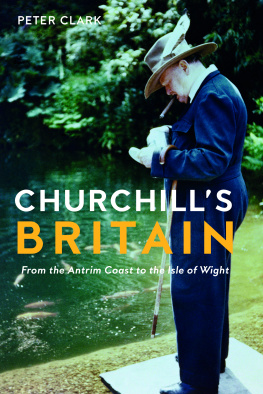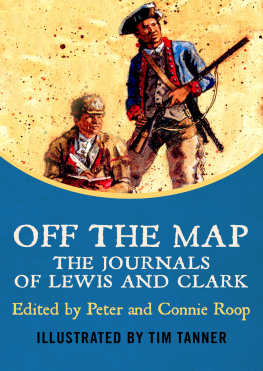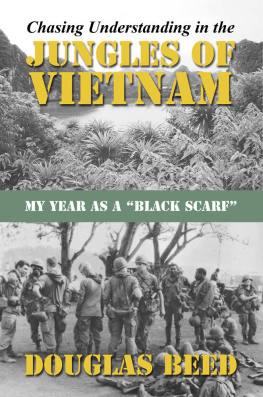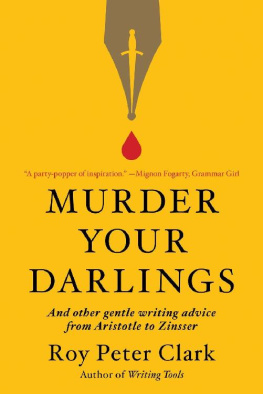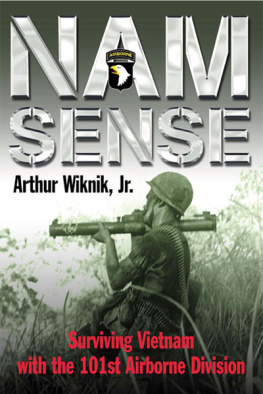Published in the United States of America and Great Britain in 2018 by
CASEMATE PUBLISHERS
1950 Lawrence Road, Havertown, PA 19083, USA
and
The Old Music Hall, 106108 Cowley Road, Oxford OX4 1JE, UK
Copyright 2018 Peter Clark
Hardcover Edition: ISBN 978-1-61200-599-7
Digital Edition: ISBN 978-1-61200-600-0
Mobi Edition: ISBN 978-1-61200-600-0
A CIP record for this book is available from the British Library
All rights reserved. No part of this book may be reproduced or transmitted in any form or by any means, electronic or mechanical including photocopying, recording or by any information storage and retrieval system, without permission from the publisher in writing.
For a complete list of Casemate titles, please contact:
CASEMATE PUBLISHERS (US)
Telephone (610) 853-9131
Fax (610) 853-9146
Email:
www.casematepublishers.com
CASEMATE PUBLISHERS (UK)
Telephone (01865) 241249
Email:
www.casematepublishers.co.uk
CHAPTER 1
Getting in
Near the end of a hot and overcast August day, I was seated on a folding metal chair in an undistinguished windowless room deep within a grey barn of a building on Van Buren Street in Chicago. Forty or so other young men in various iterations of the male clothing choices of 1965 were seated around me, some silent, some chattering nervously. At our feet were the little suitcases or gym bags that contained a change of clothes and toilet stuff, which we had been directed to bring from home when reporting to the induction station. All of us held big brown paper envelopes with our names, last name first, printed on the front in black magic marker. These contained the paper and cardboard residue of the last few hours of processing through the Army Induction Center, during which I had stood in long lines of guys, sometimes clothed, sometimes naked, as bored and impatient soldiers chivvied us from room to room. We had been tested, subjected to group physical examinationsTurn round! Ben over! Spread th cheeks a yur butt apart wit yur hans!and had 30 seconds of attention from somebody with a stethoscope. The results of these activities had been collected, perforated, and inserted into the twin prongs of a cardboard folder with mysterious printed boxes and notations, stuffed into the brown paper envelopes, and thrust into our hands by young men in uniforms. These guys, all of whom presumably had been anxious civilians like us a short time ago, were like beings from another planet: they had gone through what we were about to undertake and come out the other side. Their indifference to us as individuals contrasted with the nervous regard I at least gave them.
At some point all the chairs in the room were occupied, and an older man in a light tan uniform, with a bunch of chevrons on his short sleeves and bright brass insignia on his open collar, appeared to our front, followed by another fellow in a similar outfit but with metal bars on his epaulettes instead of stripes on his sleeves.
The first guy said, Listen up, you are about to be given the oath of enlistment.
The officer stepped up and told us to stand. Raise your right hand, and repeat after me.
We all did as we were told, and mumbled our way through the oath: I, Peter Clark, do solemnly swear that I will support and defend the Constitution of the United States against all enemies, foreign and domestic; that I will bear true faith and allegiance to the same; and that I will obey the orders of the President of the United States and the orders of the officers appointed over me, according to regulations and the Uniform Code of Military Justice. And that was that.
We picked up our suitcases and were herded out of the back of the building, where we boarded a bus that took us to Chicagos Union Station. From there our group was moved through the station and into a dusty Illinois Central passenger car. Night had fallen before we departed, and the sun was up when we arrived, dirty and tired, in Louisville. By then our ranks had been augmented by a cohort of inductees who had boarded in Indianapolis. Perhaps a hundred of us climbed on a couple of buses for the trip to Fort Knox.
In 1965 Fort Knox was famed as the location of the United States Treasury gold depository, and had figured prominently in the 1964 James Bond film Goldfinger. For our purposes, the gold could have been on Mars, as the fort was also a massive army base, home to the Armor School and a rapidly expanding collection of basic training units as the Vietnam War geared up. Our buses dropped us in the middle of one of these units, numberless World War II-era, red-brick, two-story buildings, in the middle of a field of dirt divided into lanes and rectangles by lines of rocks painted white. We processed through these buildings for a couple of days, during which we were measured for and provided with fatigue pants and blouses, khaki summer dress uniforms and heavy green winter dress uniforms, boots and shoes, coats, hats, socks, and underwear. These were crammed into a canvas duffel bag that weighed around 50 pounds when full. Our civvies went into the little overnight bags, where they were destined to molder for the next eight weeks, and our bodies went into the rough olive drab fatigues. White tapes printed with our last names were sewn over the right breast pocket flap, and a similar tape, black with yellow letters, was sewn over the left pocket, and read U. S. Army. Every couple of minutes I caught myself looking down at that U. S. Army tag, and feeling a flush of pride: I was finally a soldier. We also received our dog-tags: two lozenges of aluminum stamped with our service number, name, religion, and blood type. When asked by the dog-tag-stamper about my religion, I answered none, which drew a snarl and a nasty observation. But I was also proud of not caving in to 1960s cultural pressure by claiming a generic protestant affiliation, which my sporadic exposure to Unitarianism would have permitted. I was certainly going to try to be the atheist in the foxhole.
During this transitional interval I had, along with the other recruits, gaped at the formations of troops marching or double-timing along the asphalt, 50 or so young men dressed all the same and marching or running in what appeared to be perfect step, either to the melodious cadence of campaign-hatted drill sergeants, or singing their own accompaniment to the thud of all those boots hitting the ground in unison. The platoons, for that is what the groups were, were dressed in anything from white tees over khaki fatigue pants to full combat gear, with steel helmets, M-14 rifles, and bayonets hanging from scabbards attached to web belts. Compared to the unstructured gaggle of random recruits in which we slouched about, these formations exuded competence and purpose. I found it hard to believe that none of these soldiers was more than eight weeks ahead of us in his journey from civilian to soldier. The gulf appeared immense and almost unbridgeable.
During a couple of days of being herded around in our new uniforms and boots, inoculated, indoctrinated, and examined, we were introduced to the simplest and most basic elements of army etiquette, such as how to distinguish officers from sergeants, and how to salute the former and obey the latter. This training allowed us to be sort-of-marched down some army roads to our new home, a training company occupying five large two-story brick barracks and a smaller structure labeled A Co. Orderly Room. There we were sorted by the prefix to our service numbers: RA stood for Regular Army, and designated those of us who had enlisted; US was for those drafted under Selective Service; ER for Enlisted Reserve; and NG for National Guard, the latter two categories embarking on a six-month tour of active duty before returning to civilian life as weekend warriors. Draftees served a two-year tour of active duty, and Regular Army guys were mostly in for three years, the minimum enlistment, and some longer, such as the folks who had enlisted for a helicopter pilot program which would, about a year later, find them with a warrant officers rank and another three years to serve. There was one barracks for RAs, including me, two for draftees, and one each for ERs and NGs. Each barracks held a platoon of about 50 kids.



